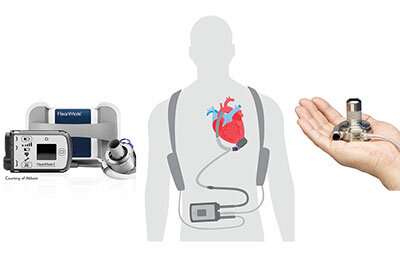Empowering rural doctors to treat advanced heart failure improves patient outcomes


Travel restrictions imposed to curb the spread of COVID-19 are making it more difficult for some heart failure patients who have artificial heart pumps to participate in follow-up care at implantation centers far from their homes. But a new study suggests there may be a viable alternative.
According to University of Utah Health researchers, local doctors in rural areas who receive specialized training in managing the devices and who work in conjunction with cardiovascular experts at a major medical center can care for these patients safely and effectively. This collaborative effort, known as shared care, not only eliminates the need for extensive travel but also eases the financial and emotional strains on many patients.
“The risk of death and adverse events for patients living remotely was almost identical to that of patients with the same devices who came in for follow-up care at our implantation center in Salt Lake City,” says Michael Yaoyao Yin, M.D., lead author of the study and a U of U Health cardiology fellow. “That tells us that shared medical care can successfully deliver vital care to patients with left ventricular assist devices who are living in remote locations.”
The study appears in the April issue of the Journal of the American College of Cardiology: Heart Failure.
About 6.5 million Americans have heart failure, a chronic, progressive condition in which the heart muscle is unable to pump enough blood to meet the body’s needs for blood and oxygen. Left ventricular assist devices (LVADs), which are electrically powered pumps implanted surgically between the left ventricle and the aorta, can help keep some patients alive while they wait for a heart transplant. But more and more often, LVADs are being implanted permanently.
“People who have permanent LVADs can do everything you and I do except swim,” says Erin Davis, BSN, LVAD and cardiothoracic transplant manager at U of U Health. “They can hike, they can fly, they can go on cruises, they can golf, and even camp.”
But what many of them can’t do is return to an implantation center for follow-up care. “Most LVAD patients need to return every three months for a checkup,” Davis says. “That isn’t always practical given that they may live far away. The emotional and financial burdens on patients in rural communities who are very ill and who need to travel long distances for specialized care are tremendous. Yet they worry that if they don’t go, they won’t receive the same level of care available to others.”
To address this health care disparity, U of U Health, which serves an area that encompasses 10% of the U.S., including Idaho, Wyoming, Montana, and much of Nevada, began offering doctors throughout the region specialized training in LVAD care, either in person or via online webinars. For instance, some LVAD patients do not have a pulse because of the continuous blood flow through the machine.
This, Davis says, may be disconcerting for local doctors. “We help demystify the LVAD so the providers are not scared of it and are comfortable having the patient live and receive care in their community,” she says.
To evaluate the effectiveness of these training sessions, Yin, Davis, and colleagues retrospectively analyzed the medical records of 336 LVAD patients, including 255 who were treated at shared care facilities in the U of U Health service area. On average, these patients lived 423 miles from the University of Utah. The researchers divided the shared-care facilities into three groups:
- Level 1- Primary care physicians and/or general cardiologists provided basic outpatient treatment but received little or no specialized LVAD training.
- Level 2—Physicians, including cardiologists, and nurses received initial LVAD training and repeat training every six months, including how to manage blood clots and infections and maintain normal blood pressure in LVAD patients. Outpatient treatment only.
- Level 3—Physicians, including cardiologists, and nurses received advanced LVAD training and/or had access to regularly scheduled heart failure clinics conducted by U of U Health LVAD experts every one to two months. Inpatient and outpatient care available.
After following the patients for two years, the researchers concluded that level 2 and 3 shared-care facilities had similar survival and LVAD-related complication rates compared to patients receiving care at the U of U Health LVAD implantation center. Patients at level 1 facilities, which provided only rudimentary LVAD care, had a significantly higher risk of infections, blood clots and death than at other shared care medical facilities or the implantation center.
Source: Read Full Article